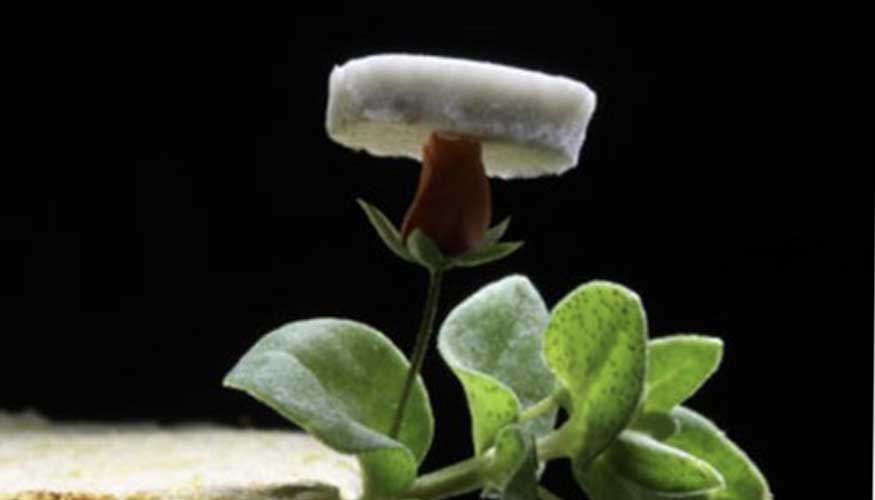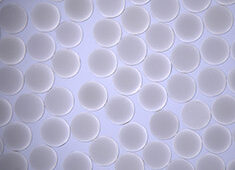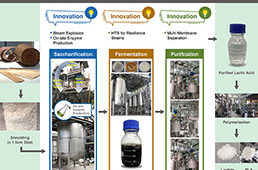
A new ultralight silver nanowire aerogel developed by Lawrence Livermore National Laboratory scientist is so light that it could lay on a fragile rosebud without the flower wilting. Credit: Lawrence Livermore National Laboratory
Several key industries may be keeping an eye on a new material— one that could be particularly beneficial for the electronics and energy industries.
Researchers from the U.S. Department of Energy’s Lawrence Livermore National Laboratory (LLNL) have developed an ultralight, silver nanowire aerogel that could yield positive results in fuel cells, energy storage, medical devices and electronics.
Conventional methods of creating these foams require demanding manufacturing conditions with high temperatures, high pressure or strict oxygen exclusion. They are also often not scalable for mass production.
However, the silver aerogels have tunable densities, controlled pore structures, improved electrical conductivity and mechanical properties, making it attractive for practical applications.
“The high porosity and excellent mechanical/electrical properties of these silver nanowire aerogels may lead to enhanced device performance and open up new possibilities in fuel cells, energy storage, medical devices, catalysis and sensors,” Fang Qian, Ph.D., lead author of the paper, said in a statement.
The researchers fabricated the ultralight, conductive silver aerogels, resulting in low-density monoliths (4.8mg/cc) that can conform to various geometries.
They prepared the silver nanowire building blocks with polyol synthesis and purified them with selective precipitation.
The silver aerogels were produced by freeze-casting nanowire aqueous suspensions, which was followed by thermal sintering to weld the nanowire junctions.
“We are able to make these ultra-lightweight silver aerogels because the quality of our silver nanowires is extremely high,” Yong Han, Ph.D., principal investigator of the project, said in a statement. “The custom feedstock synthesis capabilities we have at the Lab allow us to create such materials with demanding specifications for diverse application.”
The study was published in Nano Letters.




